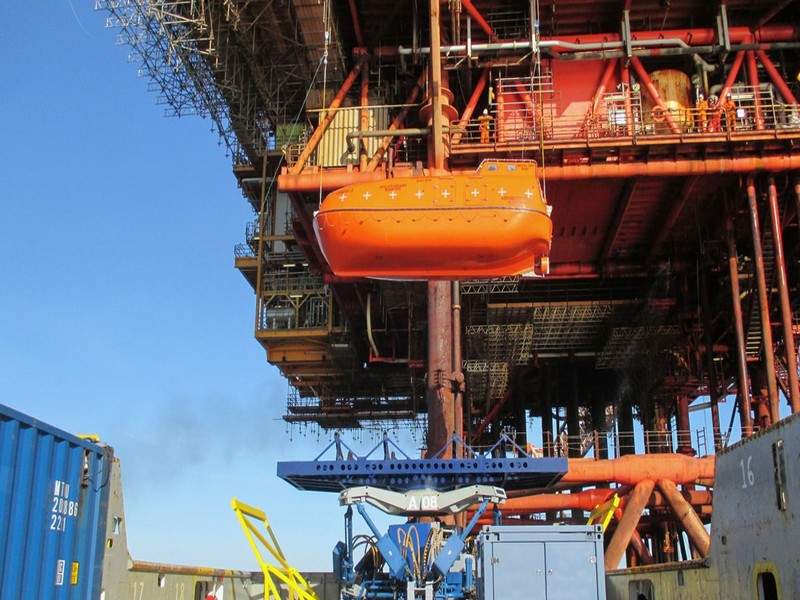
Dutch offshore access solutions company Ampelmann has launched a motion-compensated lifeboat exchange system in an effort to comply with new regulatory requirements.
The development comes at a time when the oil and gas industry is gearing up to meet new regulations imposed by the International Maritime Organisation (IMO) to improve safety at sea given the number of casualties or injuries to crew during drills and inspections.
Under the regulations, companies are required to upgrade critical release hook systems on offshore lifeboats and have 18 months to comply.
The regulations mandate companies to evaluate and replace lifeboat release and retrieval systems before 1 July 2019.
Ampelmann UK business development manager Lorenz Nehring said: “The IMO deadline is a call to action to ensure that lifeboats are re-hooked, fit-for-purpose, and of the highest safety specifications.
“The industry would be prudent to prepare and plan now to carry out the potentially risky operation of removing, upgrading and replacing lifeboat release and retrieval systems without affecting downtime and safety to personnel.
How well do you really know your competitors?
Access the most comprehensive Company Profiles on the market, powered by GlobalData. Save hours of research. Gain competitive edge.

Thank you!
Your download email will arrive shortly
Not ready to buy yet? Download a free sample
We are confident about the unique quality of our Company Profiles. However, we want you to make the most beneficial decision for your business, so we offer a free sample that you can download by submitting the below form
By GlobalData“Ampelmann can support this initiative to ensure the replacement of lifeboat release and retrieval systems is carried out efficiently, without impact to safety and day-to-day operations.”
The solution offered by the company seeks to present a better alternative to traditional procedures, which involve lifeboats being lowered in the sea, navigated to a vessel and lifted by crane onto the ship’s deck.
The Atlas system is designed to lower the lifeboat directly onto the cradle of an active heave compensated installation system located on the deck of the supply vessel.
According to the company, the hexapod allows transfer of lifeboats during wave heights of up to 3.5m as opposed to the traditional ‘wet’ transfer, which requires relatively calm sea conditions.






